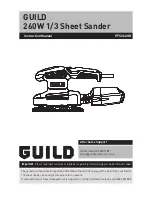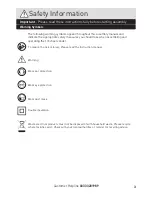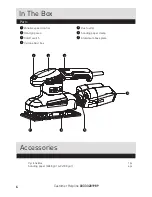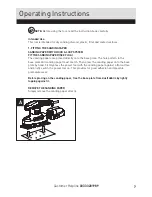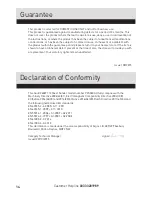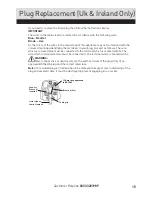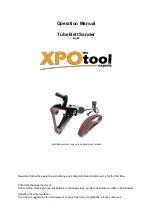
Customer Helpline 0333 3201989
11
Coarse grit will remove the most material and finer grit will give you the best finish in all
sanding operations. The condition of the surface to be sanded will determine which grit
will do the job.
If the surface is rough:
Start with coarse grit (sold separately) and sand until the surface is uniform. Then
use medium to remove any scratches left by the coarse grit. Then use finer grit (sold
separately) for finishing the surface.
Note: Always continue sanding with each grit until the surface is uniform.
Operating Instructions
Working Hints For Your 1/3 Sheet Sander
Maintenance
1. If your power tool becomes too hot, especially when used at low speed, set the speed to maximum
and run it with no load for 2-3 minutes to cool the motor. Avoid prolonged usage at very low speeds.
Always use sand paper that is suitable for the material you want to sand.
2. Always ensure the work-piece is firmly held or clamped to prevent movement.
3. Any movement of the material may affect the quality of the sanding finish.
4. Start your sander before sanding and turn it off only after you stop sanding. For the best results,
sand wood in the direction of the grain.
5. Do not start sanding without having the sandpaper fitted.
6. Do not allow the sandpaper to wear away it will damage the base-plate. The guarantee does not
cover base-plate wear and tear.
7. Use coarse grit paper to sand rough surfaces, medium grit for smooth surfaces and ine grit for the
final surfaces. If necessary, first make a test run on scrap material.
8. Use only good quality sandpaper.
9. The sandpaper controls the sanding efficiency, not the amount of force you apply to he tool.
Excessive force will reduce the sanding efficiency and cause motor overload. Replacing the
sandpaper regularly will maintain optimum sanding efficiency.
Remove the plug from the socket before carrying out any adjustment, servicing or maintenance.
Your power tool requires no additional lubrication or maintenance.
There are no user serviceable parts in your power tool. Never use water or chemical
cleaners to clean your power tool. Wipe clean with a dry cloth. Always store your power
tool in a dry place. Keep the motor ventilation slots clean. Keep all working controls free
of dust. Occasionally you may see sparks through the ventilation slots. This is normal
and will not damage your power tool.
If the supply cord is damaged, it must be replaced by the manufacturer, its service agent
or similarly qualified persons in order to avoid a hazard.
Summary of Contents for PFS260GH
Page 16: ......

